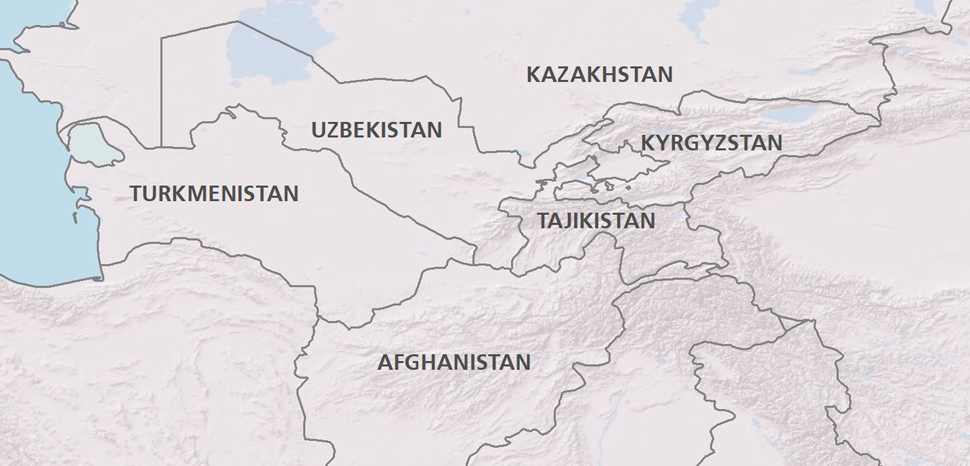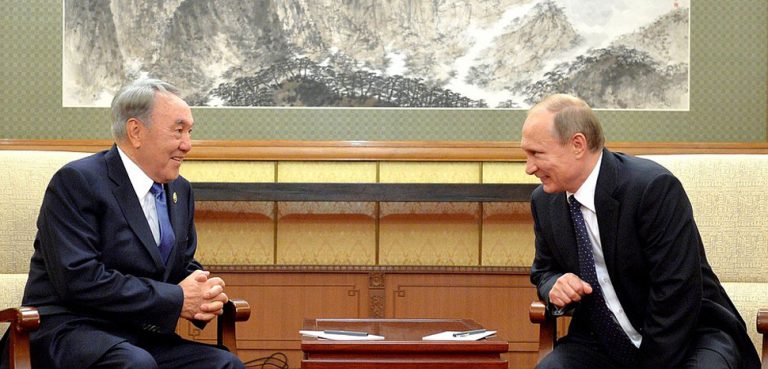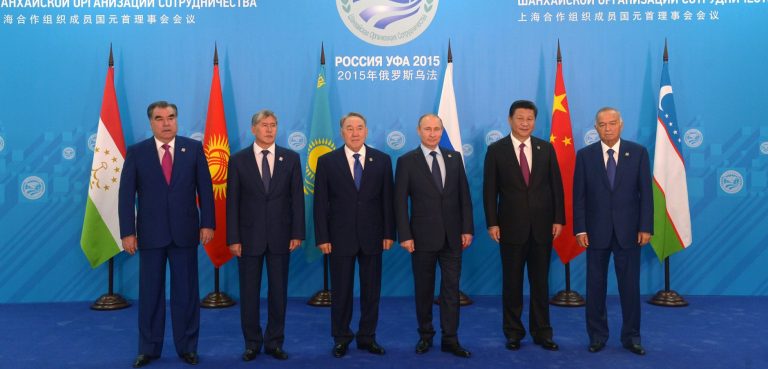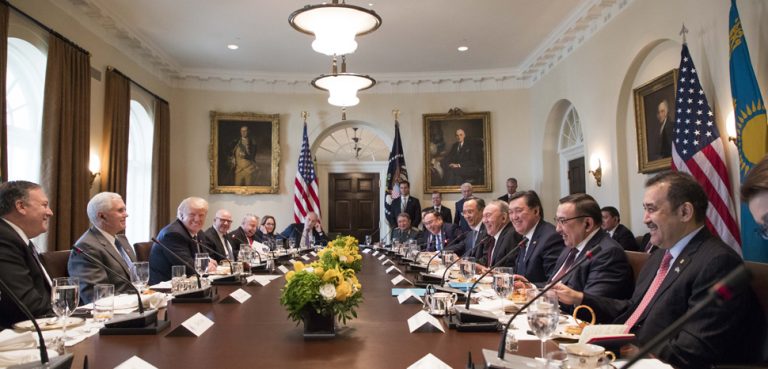The vast majority of literature since the 2001 US-led multinational military operation has focused on the role of the global powers in Afghanistan. However, it is important to also discuss what interests Central Asian states have in the country, since the view from Astana or Tashkent is not that of a far-away government, but a neighbor with which Afghanistan has strong cultural, geographic (it borders Tajikistan, Turkmenistan, and Uzbekistan), and political ties.
Central Asia-Afghanistan relations is a fairly complex topic, and fortunately new analyses have been published in recent years that discuss this issue in greater detail. Hence, for the sake of brevity, we will focus on recent developments.
Generally speaking, all Central Asian states have carried out some type of initiative to aid the development of Afghanistan. Some recent examples include:
Kazakhstan. Astana is very interested in educating Afghan youths so they can return to their homeland and help their nation develop. According to The Astana Times: “since 2010, Kazakhstan has implemented a $50 million educational program for Afghan citizens. Under the program, about 1,000 Afghan citizens will receive professional training from 2010 to 2021.” In July of this year, 53 Afghan students graduated, including surgeons, obstetricians, and pediatricians, from a Kazakh university. Astana has also separately called for a peace process in Afghanistan.
Kyrgyzstan. A considerable amount of ethnic Kyrgyz live in Afghanistan, particularly in the mountainous Wakhan Corridor, and there have been meetings recently between the two governments regarding their protection. Additionally, Afghanistan and Kyrgyzstan are two of the four countries that form the joint Central Asia-South Asia energy project commonly known as CASA-1000.
Tajikistan. In mid-June, Dushanbe pledged to increase power exports to Afghanistan. According to Azernews, “in 2017 Tajikistan supplied about 1.4 billion kWh of electricity to Afghanistan. This year it plans to increase this figure to 1.5 billion kWh.” Tajikistan is also part of the CASA-1000 project. Even more, in a sign of Kabul’s willingness to further improve relations with its direct neighbor, the Afghan government has extradited four supporters of the late Tajik rebel general Abduhalim Nazarzoda.
Turkmenistan. The two countries are part of the Turkmenistan-Afghanistan-Pakistan-India (TAPI) gas pipeline, which would provide Ashgabat a corridor to increase its exports. The first three aforementioned countries are also part of a different energy project, TAP, which will “transmit 500 kilovolts of power from Turkmenistan to Pakistan through Afghanistan.” Finally, in December 2017, a MoU was signed to improve railway infrastructure between the two countries in order to help Afghan products reach new markets.
Uzbekistan. Tashkent is attempting to mediate between the Afghan government and the Taliban. In December 2017, Afghan President Ashraf Ghani visited Tashkent; months later, in March, Uzbekistan held a peace conference (which the Taliban skipped), and offered its services to mediate between the Taliban and Kabul once again in June. Additionally, Tashkent appears to be committed to promoting Afghan development: in early July, Uzbekistan pledged to “invest $500 million into the construction of railway tracks from Mazar-i-Sharif city to Herat province.” Finally, there have been talks recently about creating a free trade zone between the two states to promote trade and development (bilateral trade in 2017 reached US$ 350 million).
The common denominators among Central Asian interests regarding Afghanistan are stability and prosperity. By this we mean that regional governments do not want the Taliban to return to power – a worrisome possibility as the group has regained control of several provinces – since this might contribute to radicalism spreading throughout the region.
For the sake of argument, it is important to note that Central Asia analysts have somewhat differing positions regarding how much of a threat the Taliban and/or the so-called Islamic State present to the region. For example, a 2014 report by the AAN argues that “security risks that link Afghanistan to the former Soviet republics of Central Asia are often highly exaggerated” as “in Central Asia the main players in narcotics trafficking are government employees, security officers, and mafia figures,” while insurgents tend to be more often local rather than originating in Afghanistan.
This is a fairly controversial statement that clashes with more recent analyses, like “Central Asia’s Anxious Watch On The Afghan Border” by Radio Free Europe/Radio Liberty and “Why Central Asia is increasingly worried about Afghanistan” by DW. Even more, recent incidents indicate that Taliban forces are operating dangerously close to Afghanistan’s neighbors. For example, a June 2018 Taliban attack that killed 16 Afghan troops occurred in Takhar province bordering Tajikistan. Moreover, four foreign cyclists were murdered in Southern Tajikistan in late July, a crime that Islamic State has since claimed responsibility for.
Thus, the activities of Afghanistan-based violent extremists continue to get closer to the three bordering Central Asian states, making a spread of violence a valid possibility. Central Asia has already seen its share of conflict since gaining independence from the Soviet Union, such as the Tajik civil war (1992-1997) and Uzbekistan’s clashes with the Islamic Movement of Uzbekistan, whose remaining fighters have sworn loyalty to the Taliban (though some other Uzbek nationals have joined the IS branch in Khorasan province). Thus, it is a national security interest for Central Asian governments to not only help Afghanistan defeat the Taliban and other insurgent movements, but also to promote the country’s development and prosperity in order to prevent new groups from appearing.
Projects like CASA-1000, TAPI and TAP are good examples of Central Asia providing Afghanistan with much needed energy, and we will have to monitor whether any of these projects become operational in the near future. On the other hand, it is debatable how much Central Asia can actually profit from the Afghan market, as China, Europe, and Russia are more desirable and lucrative targets. Afghanistan could serve as a corridor for Uzbek, Tajik, and/or Turkmen products to reach India and Pakistan, but this will depend on the construction of better roads and railways in Afghanistan, not to mention the resolution of lingering security issues.
Additionally, Central Asian states have much to gain from peace in Afghanistan because it will mean the protection of ethnic minorities who live there (and who in turn may become – or already are – influential players in Afghan politics). For example, a July commentary in The Diplomat explains, “if Tashkent can play a role in convincing some members of the Taliban to come to the bargaining table, Uzbekistan’s status as a regional mediator will increase greatly.” Astana has similarly attempted to promote dialogue, but it seems that the Afghan conflict is so complex, given the various players and interests involved, that it’s unlikely that any peace process will bear fruit anytime soon.
Final Thoughts
Rather than a top-down or bottom-up approach, Central Asian initiatives towards Afghanistan are all over the place, hinting at a lack of coordination among these governments regarding how to handle their neighbor. The lack of a regional blueprint (the Istanbul Process notwithstanding) and the lack of any desire among the governments to work together (e.g. Turkmenistan’s historic isolationism) are two possible explanations of the current situation.
This does not mean that there have not been successes. The education of Afghan doctors in Kazakhstan will hopefully pay off in the long-term, and energy-related projects among the other states will hopefully provide Afghanistan with development, jobs, and revenue – assuming that Kabul manages to address corruption in the country, particularly in its fuel sector.
While the U.S. and its allies have generally focused on a military approach to dealing with Afghanistan, Central Asian states have approached the nation primarily via non-violent routes (mediation attempts; nurturing investment and construction; and educating the Afghan youth). But the overriding question is: How long can this strategy last if Afghan-based insurgent groups carry out more attacks in Central Asian regions bordering Afghanistan?
The views expressed in this article are those of the author alone and do not necessarily reflect those of any institutions with which the author is associated, and don’t reflect any official position of Geopoliticalmonitor.com.




